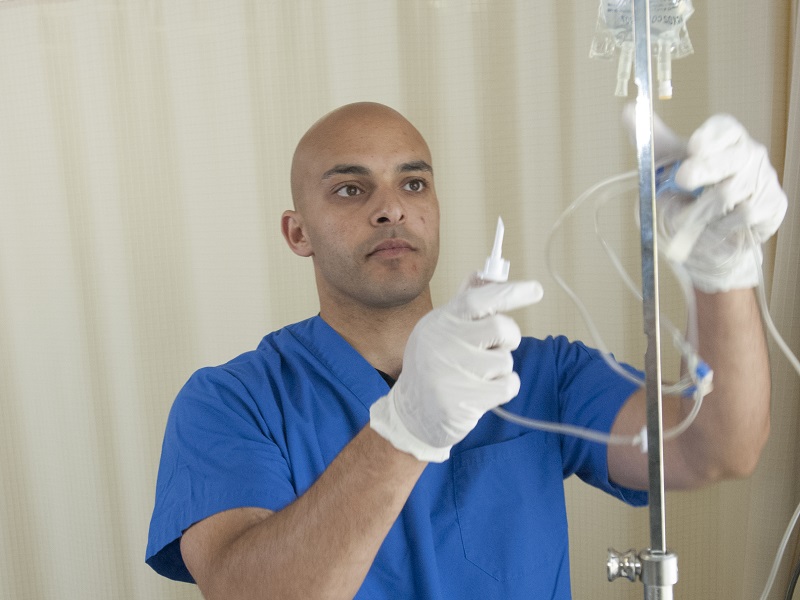Keeping healthcare workers safe

An online learning module developed by Chun-Yip Hon, associate professor, School of Occupational and Public Health, explains how to prevent healthcare workers’ exposure to hazardous drugs.
A new online learning module (external link, opens in new window) aims to raise awareness of the risks of exposure to antineoplastic (hazardous) drugs and outline health and safety best practices to mitigate the risk.
The module was developed by Chun-Yip Hon, an associate professor in the School of Occupational and Public Health, in partnership with the Public Services Health & Safety Association (PSHSA) and the Centre for Research Expertise in Occupational Disease (CREOD).
Antineoplastic drugs are primarily used to treat cancer. Exposure to these drugs has been linked with adverse reproductive effects, genetic damage and an increased risk for certain cancers. While the benefits outweigh the risks for a cancer patient, the same cannot be said for healthcare workers who may come in contact with these drugs.
A wide range of healthcare workers are potentially exposed to antineoplastic drugs as they travel throughout the hospital medication circuit, from delivery to disposal. Nurses tasked with drug administration and pharmacy personnel responsible for drug preparation are potentially exposed. Additionally, workers in shipping and receiving, housekeeping, as well as home and long-term care, may be at risk.
Exposure happens primarily through skin contact, but inhalation, ingestion from hand to mouth contact, or accidental injection is also possible.
According to occupational health and safety regulations in Ontario, employers must provide training to workers who may be exposed to antineoplastic drugs. However, prior to the creation of the new online learning module, a lack of standardized training was available. “Anecdotally, I know that’s not being met - based on my own personal work as well as in discussion with my colleagues who are in the healthcare sector,” Hon explains.
“This module is meant to address that gap -- having standardized training and making sure it addresses all individuals within the hospital medication circuit that might be occupationally exposed. We wanted to ... ensure that workers know what the risks are, how they might be exposed and some of the health effects.”
“The goal of these modules is to raise everyone’s awareness to a certain baseline level -- whether you’re a shipping receiver, a housekeeper or a nurse,” he continues. To that end, the module consists of different sections pertaining to drug administration workers, home and long-term care workers, housekeeping staff, pharmacy personnel, and shipping, receiving and transportation workers.
Hon worked with his partners to develop the learning module content based on best practices established by experts in occupational health, pharmacy and nursing. “We reviewed best practices and then extracted content from there to put in the modules so that it’s all in one handy resource,” he explains.
Chun’s team brought in beta testers to evaluate the module, and their data analysis suggests that there was an increase in knowledge transfer post-module. “We believe that the module is effective in transferring knowledge,” he says. “The [beta testers] felt that it was a beneficial resource.”
Learn more about Best practices to prevent healthcare workers’ exposure to antineoplastic (hazardous) drugs (external link, opens in new window) . Watch the antineoplastic drug training awareness video (external link, opens in new window) .
This research project was funded by the Ministry of Labour, Training and Skills Development through the Occupational Health, Safety and Prevention Innovation Program (OHSPIP).